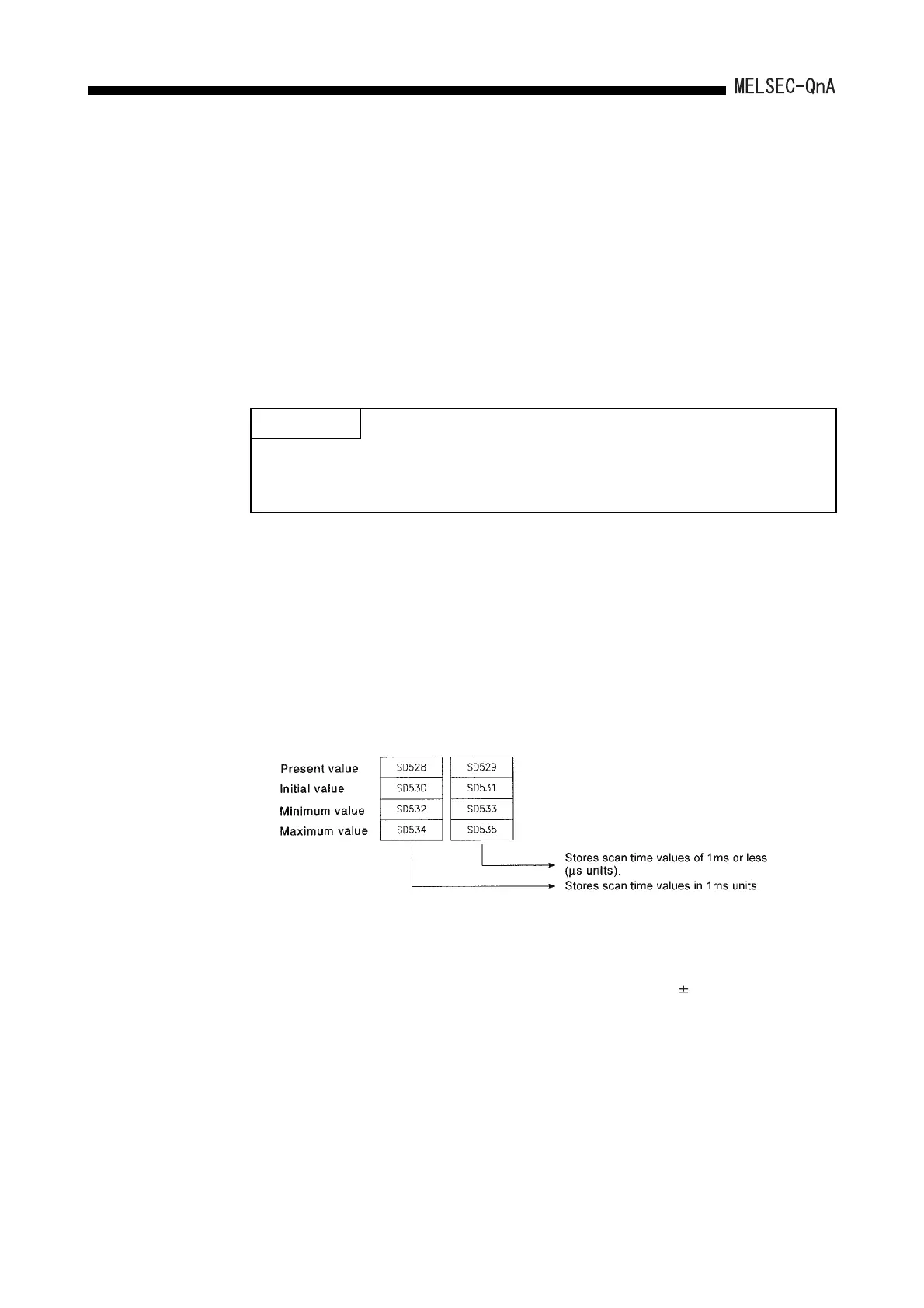12 - 14
12. OVERVIEW OF PROCESSING PERFORMED BY THE QnACPU
(4) END processing
When all of the low-speed execution type program has been completed, low-speed
END processing is executed.
The following processing is performed in low-speed END processing:
• Setting of special relays/special registers for the low-speed execution type
program
• Writing the low-speed execution type program during RUN
• Measurement of the low-speed scan time
• Resetting the watchdog timer for the low-speed execution type program
When low-speed END processing is completed, the low-speed execution type
program is executed again from the beginning.
(5) Low-speed scan time
(a) The low-speed scan time is a total time of the time required for completion of the
low-speed execution program and the low-speed END processing time.
If multiple low-speed execution type programs are to be executed, it is the total
time of the time required for completion of all low-speed execution type
programs and the low speed END processing time.
(b) The QnACPU measures the low-speed scan time and stores it in special
registers SD528 to SD535.
*1
The low-speed execution scan time can be checked by monitoring these
registers.
Example:
If "3" and "400" are stored in SD528 and SD529 respectively, the scan time is
3.4ms.
*1 The accuracy of each scan time stored in the special registers is 0.1ms. Note that, even if a
watchdog timer (WDT) reset instruction is executed in the sequence program, measurement
of each scan time is continued.
POINT
In execution of a low-speed execution type program, the constant scan time may
be extended by a time equivalent to the maximum processing time for the
instructions executed plus the low-speed END processing time.

